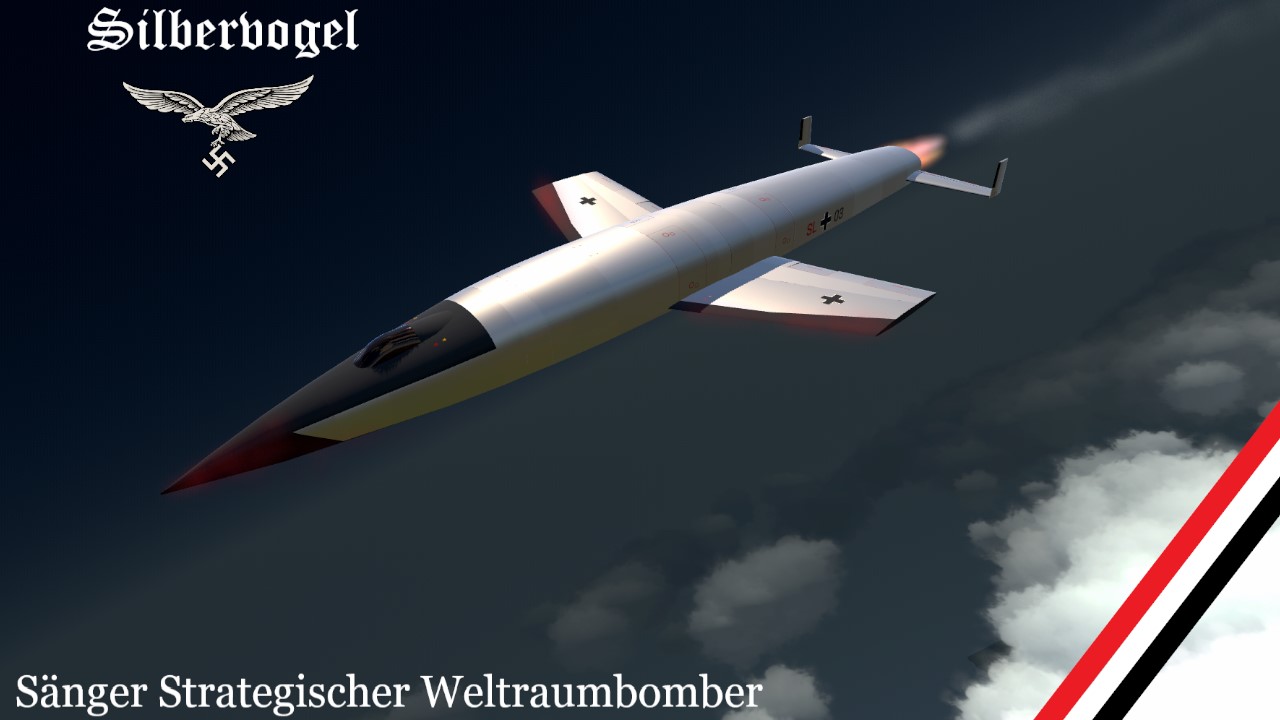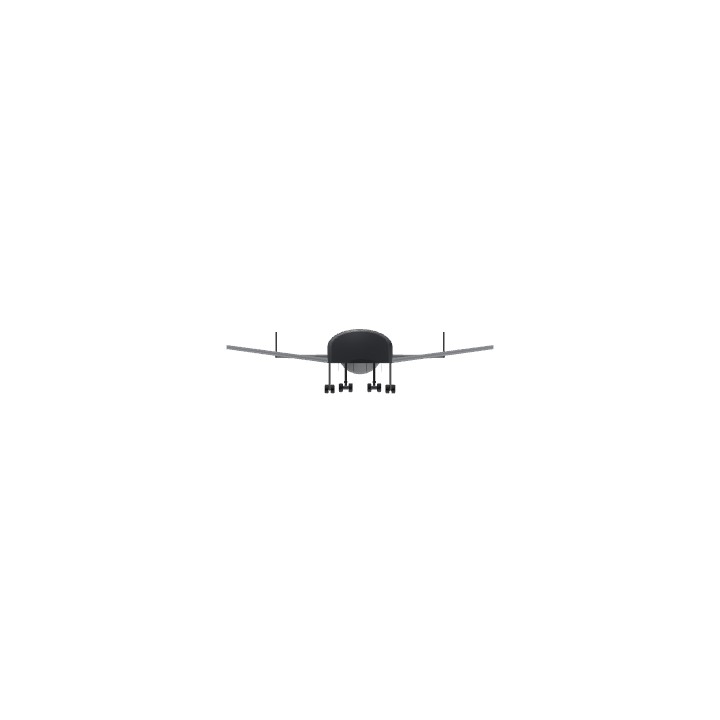Wunderwaffe serie
- Die Glocke
- Haunebu I
- Haunebu IIB
- Haunebu III
- Silbervogel
Well, today I present to you the famous german space shuttle.
This time, this project is indeed real and has even been represented on a drawing board.
A little bit of history, to start.
The Silbervogel ("Silver Bird") was a proposed sub-orbital rocket-powered bomber designed by Eugen Sänger and Irene Sänger-Bredt in the 1930s for use by the Luftwaffe.
It is often referred to as the Amerika Bomber, although it was only one of several designs for this mission.
This project was remarkable, in the sense that it incorporated recent research into the rocket coupled with the principle of a supporting body. But it was judged to be too complex and expensive to carry out, which meant that it did not progress beyond the stage of wind tunnel testing.

After the end of the conflict, Sänger and Bredt worked for France and in 1949 founded the Astronautical Federation, while in France, Sänger was the subject of an attempted (failed) turnaround by Soviet agents.
Stalin, intrigued by intelligence reports about the Silbervogel, sent his son, Vasily, and scientist Grigori Tokaty to kidnap Sänger and Bredt and bring them back to the USSR.
When the plan failed, a new research office on this concept was created in 1946 by Mstislav Vsevolodovich Keldysh.
A new Russian version powered by ramjets instead of rocket engines was developed but not produced : it is known as the Keldysh bomber. Although its design served as the basis for a series of cruise missile projects in the 1960s, none of them saw the light of day.

In the United States, this project gave birth to the X-20 Dyna-Soar, directly derived from the Silbervogel, which was launched by a Titan II booster.
With the creation of NASA and the fact that observation satellites were capable of carrying out these missions, the United States Air Force gradually withdrew from spaceflight and the Dyna-Soar project was abandoned.
The lasting legacy of the Silbervogel concept is the "regenerative engine" design, in which fuel circulates in tubes around the engine to cool it and allow it to be pressurized. Many modern missiles still use the Sänger-Bredt design.
In conclusion, it was a rather formidable project, for the time, which could have overcome any defense system of the time (missiles capable of intercepting targets flying that high were still far away). A suborbital bomber capable of erazing a city, returning to base (or land in Japan), and that in just an hour... yeah, that was pretty good.
Okay, now it's time to make it fly, don't you think ?

So, to take off, it's rather simple, I would say, you just have to select a long enough runway, Yeager, Wright, or Avalanche, put the TRIM at the very top, full throttle, and wait for the aircraft to take off by itself . I strongly advise you not to force takeoff, wait until you become a little familiar with it, it will save you trouble !

Well, once the aircraft has left the ground and you have retracted the gear, you must adjust the TRIM, this time, lower it, the boosters will separate by themselves, maintain a climb at 30°.

Once the boosters are separated, the plane is free and more maneuverable, the two auxiliary rockets will ignite at a certain altitude to give a serious boost to the aircraft.

I forgot : this is a nuclear bomber, right ?
Okay, so let's see how we can do some damage with it.
First, you will have to open the bomb bay : AG2, then, switch to the air to ground weapons, you will see the designator, then, simply drop the bomb, and watch it fall on the target... well, take it anyway a good distance or risk being disintegrated by the explosion !

Many things are automated on this plane, in order to make its use simpler for the pilot, so that he can concentrate as much as possible on his mission, the separation of the boosters, the ignition of the different engines, it does not require you. All you have to do is make sure you retract the gear, put on maximum power, and ensure trim and piloting, simple, right ?

You can also choose to fly in cockpit mode, you will find everything you need to operate the plane and its armament.
This device only has 751 parts, so it can be used on mobile.
Now all I have to do is let you enjoy this bird, hoping you like it.
One last thing, don't forget to upvote if you like it :)
Specifications
Spotlights
- Trainzo 1.2 years ago
- blt 1.2 years ago
- NINJ4 1.2 years ago
- ChihiroFujisaki 1.2 years ago
- TheFlightGuySP 1.2 years ago
General Characteristics
- Created On Windows
- Wingspan 43.9ft (13.4m)
- Length 115.5ft (35.2m)
- Height 10.7ft (3.3m)
- Empty Weight 11,776lbs (5,341kg)
- Loaded Weight 14,435lbs (6,547kg)
Performance
- Power/Weight Ratio 399.316
- Wing Loading 84.8lbs/ft2 (414.1kg/m2)
- Wing Area 170.2ft2 (15.8m2)
- Drag Points 3621
Parts
- Number of Parts 751
- Control Surfaces 8
- Performance Cost 3,234





Freakin Awesome!
This one of the coolest planes I’ve flown
Great work🔥
Yay
Bros back
HOLY FUCK HES BACK
@MadAgus
Thank you for your comment! Glad you like it! Indeed, basically, it was intended to be launched from a lubricated rail, the booster separating from the plane and remaining on the rail, but as we are on SP, it would be complicated to make a large rail, I I therefore chose to fly the booster by designing it more like a two-stage rocket.
The Soviet version would be nice too, yes.
This is practically perfect, from the story to the build itself which runs smoothly even on my phone. Just to add to the story, this was also planned to be launched from train tracks with a custom rear booster. It would be cool to see the rough version with ramjets on the wings too!
He is back!!!!
He is back!!!!
@Trainzo Merci ! Ravi que tu l'apprécies !
Very great build with history. I love it.
@Graingy
@TheNewSPplayer
@GeneralCorpInc
@TheMouse
@MIGFOXHOUND31BSM26
@Marulk
@MadAgus